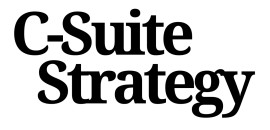
Understanding the strategic value of spend analysis
Why spend analysis matters for strategic leadership
For CEOs, understanding the strategic value of spend analysis is more than a finance exercise. It’s about unlocking actionable insights from spend data that drive better decision making across the company. When procurement and sourcing decisions are based on clean, accurate data, businesses can identify cost savings, optimize supplier relationships, and align spend with broader company objectives.
Spend analysis is not just about cutting costs. It’s about using data-driven insights to reveal hidden inefficiencies, uncover new sourcing opportunities, and support strategic sourcing initiatives. By analyzing spending patterns and supplier data, leaders can make informed, strategic choices that impact the bottom line and long-term growth.
- Data cleansing ensures that spend analytics are reliable, providing a solid foundation for procurement processes and spend management.
- Spend analytics help identify tail spend and under-the-radar expenses that often go unnoticed but can add up to significant savings.
- Supplier management benefits from a clear view of spend, enabling better negotiations and stronger supplier relationships.
Real-world case studies show that companies leveraging spend analysis achieve measurable improvements in cost savings and strategic sourcing. For leaders looking to deepen their understanding of how business education can enhance strategic insights, this resource on strategic insights from business education offers further perspective.
As we explore how data-driven analysis can identify hidden inefficiencies and drive cultural change, it becomes clear that spend analysis is a cornerstone of modern strategic management. It’s not just about the numbers—it’s about empowering CEOs to make smarter, more impactful decisions for their organizations.
Identifying hidden inefficiencies through data-driven insights
Uncovering Value in Your Spend Data
Many businesses overlook the hidden inefficiencies buried within their spend data. A robust spend analysis can reveal patterns and outliers that traditional procurement processes often miss. By leveraging advanced analytics, companies can identify cost drivers, redundant suppliers, and non-compliant spending, all of which impact the bottom line.
- Data cleansing is the first step. Cleaning and standardizing spend data ensures accuracy, making it easier to spot savings opportunities and inefficiencies.
- Spend analytics tools help visualize spending patterns across categories, suppliers, and business units, highlighting areas where strategic sourcing can deliver better value.
- Tail spend—the small, fragmented purchases that add up—often escapes management attention. Through detailed analysis, companies can consolidate suppliers or renegotiate terms to achieve cost savings.
When businesses apply data-driven insights to procurement and spend management, they can make better sourcing decisions and improve supplier relationships. This approach not only supports strategic decision making but also strengthens the company’s ability to adapt and compete.
For a deeper look at how transformative leadership can drive these changes, explore the role of a transformative CEO in modern business strategy.
Aligning spend with organizational priorities
Connecting Spend Data to Business Objectives
For CEOs, aligning spend with organizational priorities is not just about cutting costs. It’s about ensuring every dollar spent supports the company’s strategic direction. Spend analysis provides the data and insights needed to make this alignment possible. By examining spending patterns and leveraging analytics, leaders can identify whether procurement activities are truly driving value or simply maintaining the status quo.
- Data-driven clarity: Spend analytics reveal where resources are being allocated, highlighting both strategic sourcing successes and areas for improvement.
- Prioritizing investments: With a clear view of spend data, businesses can channel resources into suppliers and services that directly support growth, innovation, or operational excellence.
- Identifying cost savings: Analysis uncovers tail spend and hidden inefficiencies, enabling better spend management and more informed sourcing decisions.
When procurement processes are aligned with company goals, the impact is felt across the organization. Strategic sourcing becomes a lever for competitive advantage, not just a cost control measure. This approach also strengthens supplier relationships, as partners are chosen and managed based on their ability to deliver on the company’s priorities.
For a deeper dive into how aligning spend with business objectives can enhance inventory and sourcing strategies, read this case study on mastering the weeks of supply formula. It’s a practical example of how data-driven decision making transforms procurement and spend management into strategic assets.
Leveraging spend analysis for supplier negotiations
Unlocking Value in Supplier Negotiations
Effective supplier negotiations are a cornerstone of strategic sourcing and procurement management. When companies leverage spend analysis, they gain a comprehensive view of their spending patterns, supplier relationships, and sourcing decisions. This data-driven approach enables businesses to identify cost savings and uncover new opportunities for value creation. Spend analytics provide actionable insights into how much is spent, with whom, and on what services or products. By cleansing and analyzing spend data, organizations can:- Pinpoint areas of tail spend that often go unnoticed but collectively represent significant savings potential
- Benchmark supplier performance and pricing across categories to ensure competitive rates
- Identify opportunities for supplier consolidation, reducing complexity and improving negotiation leverage
- Highlight duplicate or overlapping services, allowing for better spend management and reduced waste
Driving cultural change through transparency
Building Trust with Spend Transparency
When companies open up their spend data and analysis to the broader organization, they set the stage for a culture of trust and accountability. Transparent spend management is not just about reporting numbers. It’s about showing how procurement decisions, supplier relationships, and sourcing strategies align with business goals. This level of openness helps everyone—from finance to operations—understand where the money goes and why.Empowering Teams with Data-Driven Insights
Sharing spend analytics across departments enables teams to identify cost savings and sourcing opportunities that might otherwise remain hidden. When employees see the impact of their decisions on overall company spending, they become more engaged in finding efficiencies. This data-driven approach to procurement processes encourages collaboration and continuous improvement.- Teams can spot tail spend that drains resources and address it proactively.
- Procurement and sourcing decisions become more strategic when backed by clear spend analysis.
- Data cleansing and spend analytics help ensure everyone is working from accurate, actionable information.
Fostering Accountability and Continuous Improvement
Transparency in spend management creates a feedback loop. As businesses implement new strategies based on spend analysis, they can track results and adjust quickly. This ongoing process not only identifies hidden inefficiencies but also reinforces a culture where data-driven decisions are valued. Over time, this leads to better supplier management, improved services, and sustainable cost savings. By making spend data accessible and actionable, companies empower their people to drive strategic sourcing and smarter spending patterns—transforming the way the organization thinks about value and growth.Turning insights into action: implementing strategic changes
From Analysis to Action: Embedding Spend Insights into Business Operations
Turning spend analysis into real strategic change is where many businesses see the greatest value. Once the data is cleansed and the insights are clear, the challenge is to move from understanding to implementation. This is where leadership and cross-functional alignment make the difference. Start by prioritizing the most impactful opportunities identified through your spend analytics. Focus on areas where procurement processes can be streamlined, or where tail spend is driving unnecessary costs. Use data-driven sourcing decisions to renegotiate supplier contracts, consolidate spend, or even diversify your supplier base for better risk management. A practical approach to embedding these insights into your company’s operations might include:- Setting clear targets for cost savings and tracking progress with spend management dashboards
- Integrating spend data into regular management reviews to keep teams accountable
- Building cross-functional teams to address complex sourcing or supplier relationship challenges
- Investing in ongoing data cleansing and analytics to ensure your insights remain current and actionable














